Abstract
The metabolism of glucose and fructose was studied in resting succinate-grown cells of Acetobacter xylinum. From fructose only cellulose and CO2 were formed by the cells, whereas from glucose, gluconate was formed much more rapidly than these two products. The molar ratio of sugar converted into cellulose to sugar converted into CO2 was significantly greater than unity for both hexoses. The pattern of label retention in the cellulose formed by the cells from specifically 14C-labelled glucose, fructose or gluconate corresponded to that of hexose phosphate in a pentose cycle. On the other hand, the isotopic configuration of cellulose arising from variously singly 14C-labelled pyruvate did not agree with the operation of a pentose cycle on gluconeogenic hexose phosphate. Readily oxidizable tricarboxylic acid-cycle intermediates such as acetate, pyruvate or succinate promoted cellulose synthesis from fructose and gluconate although retarding their oxidation to CO2. The incorporation into cellulose of C-1 of fructose was greatly increased in the presence of these non-sugar substrates, although its oxidation to CO2 was greatly diminished. It is suggested that the flow of hexose phosphate carbon towards cellulose or through the pentose cycle in A. xylinum is regulated by an energy-linked control mechanism.
Full text
PDF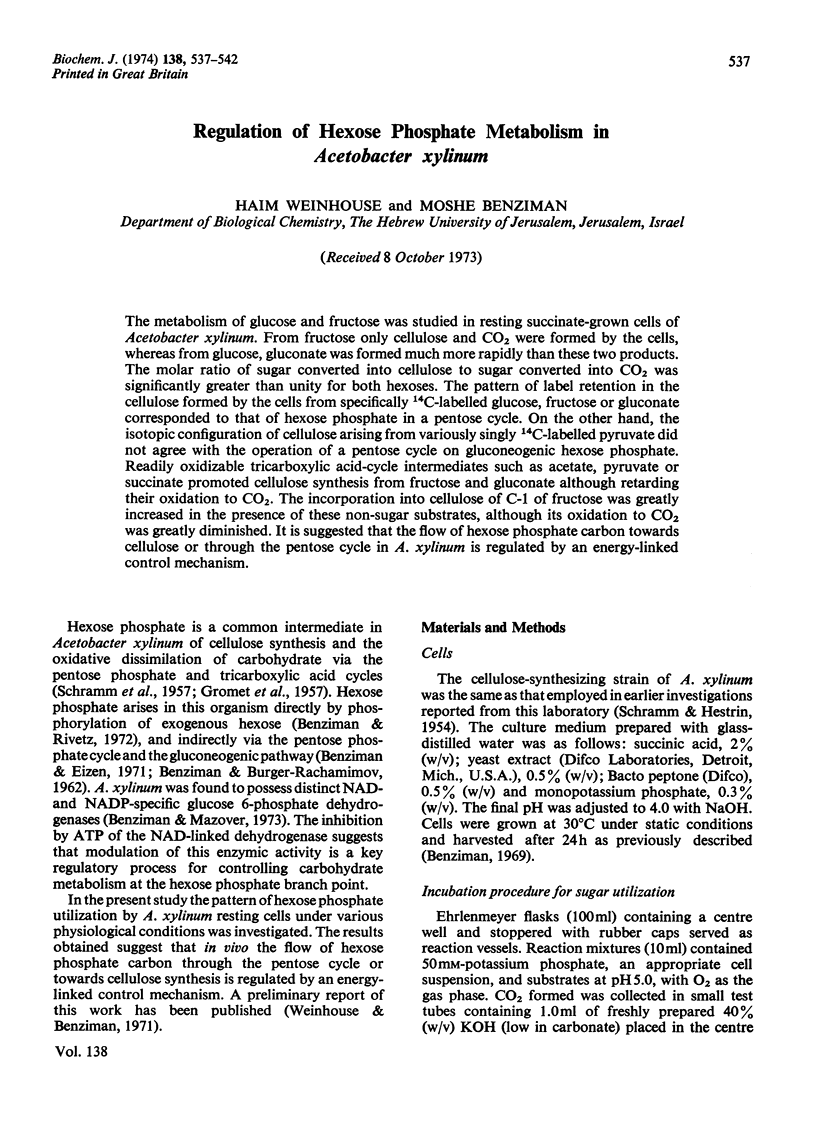
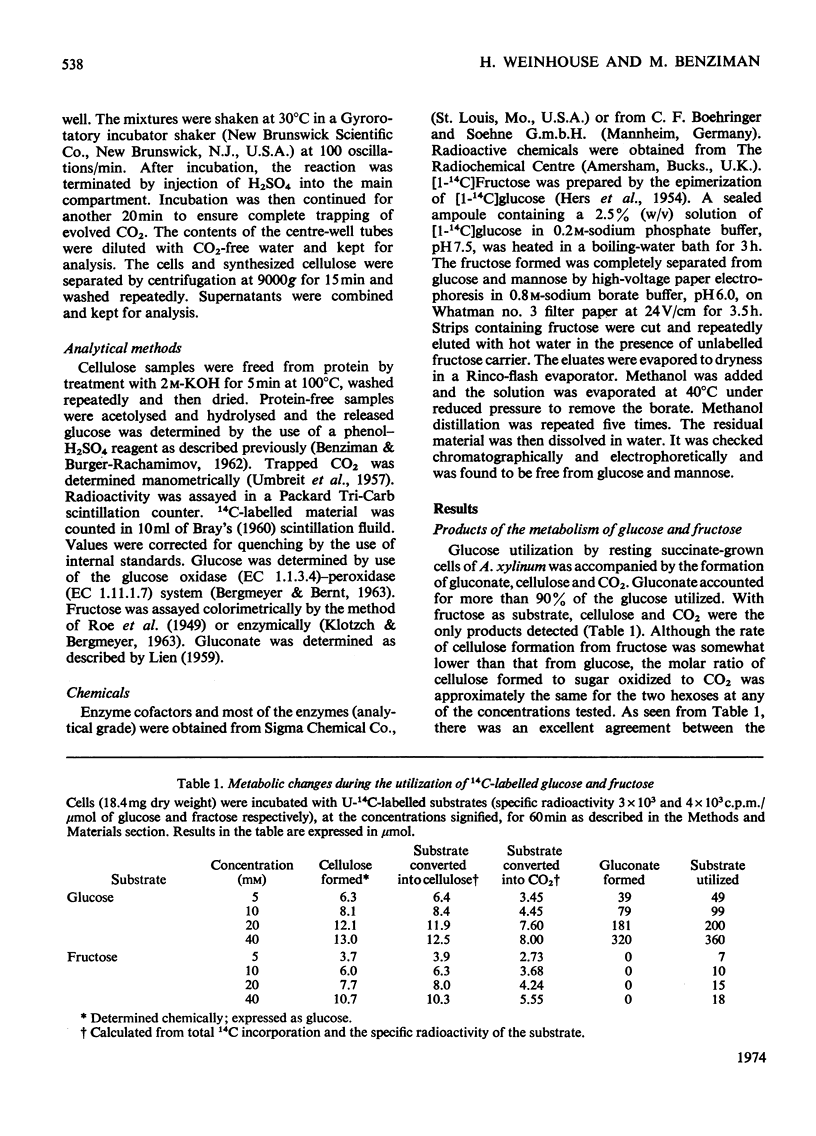
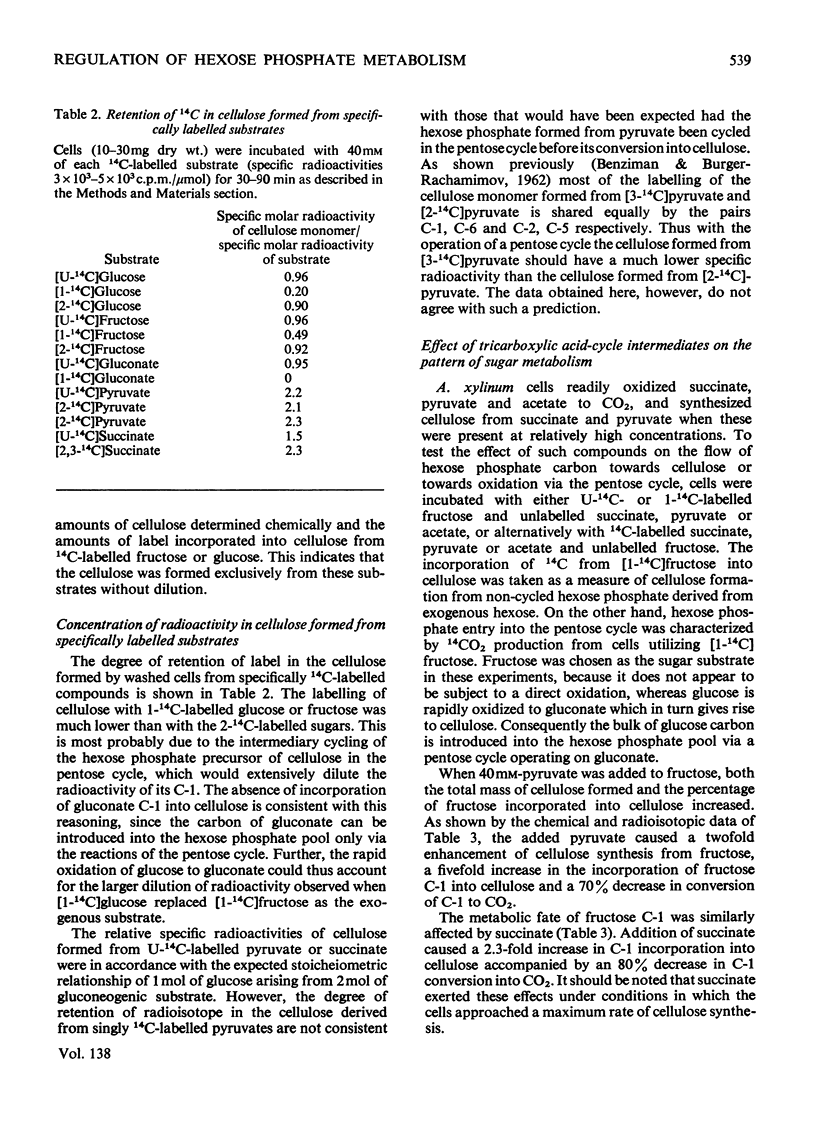
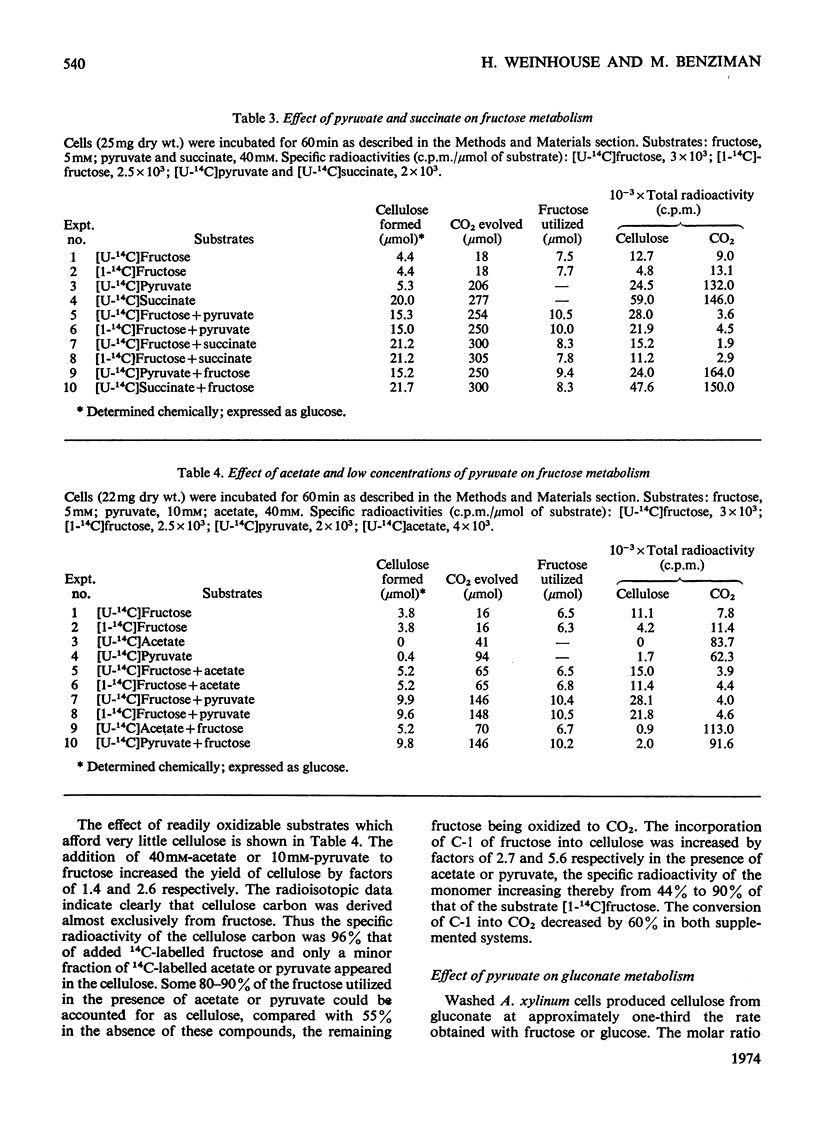
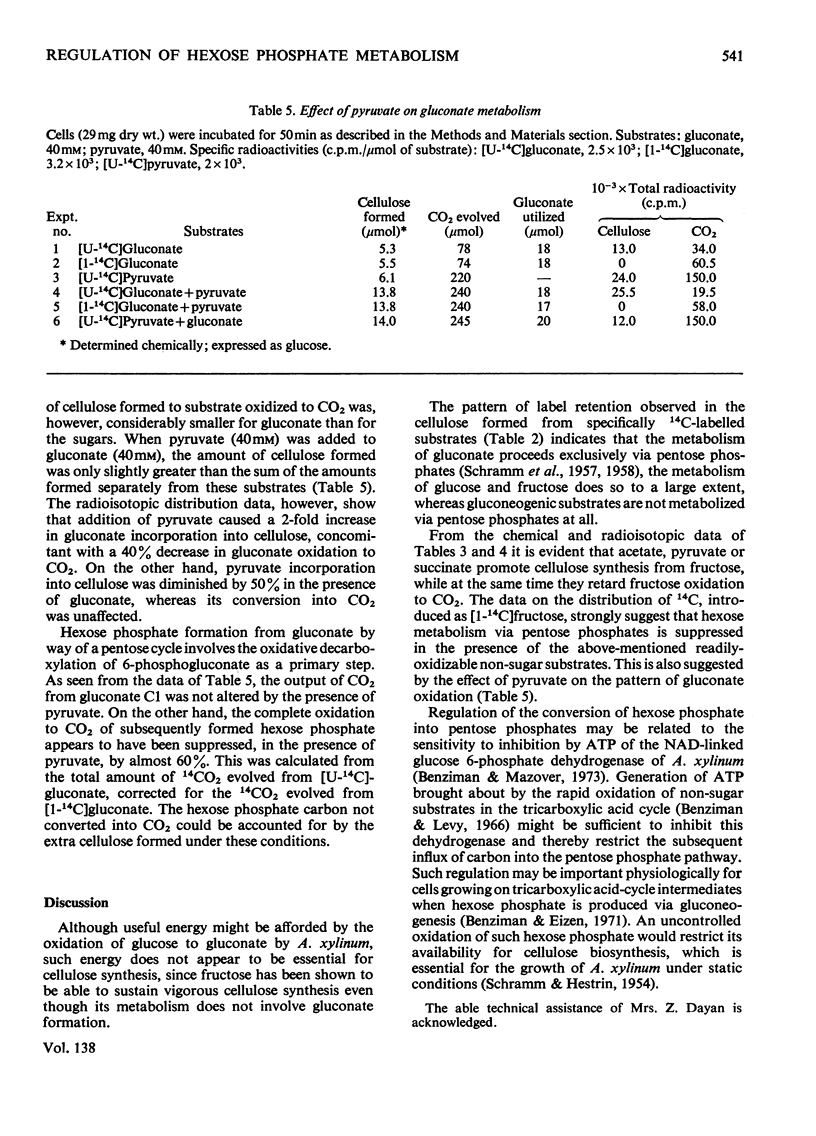
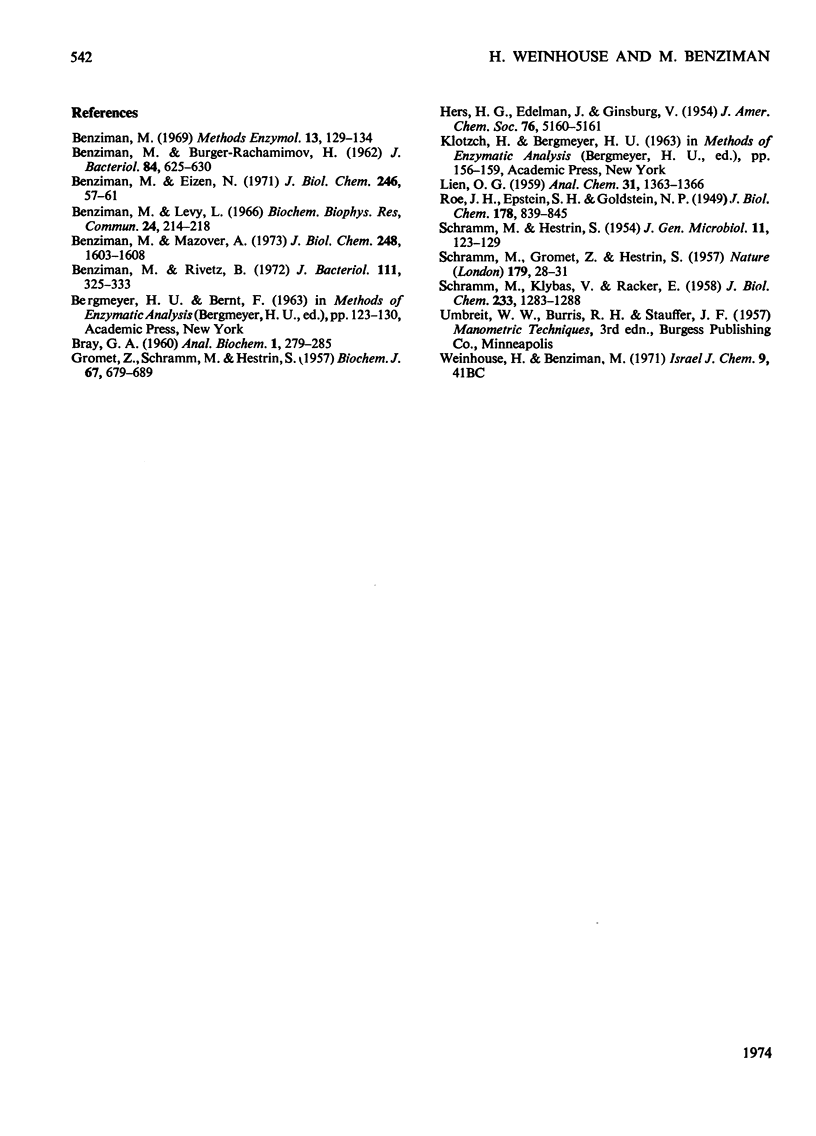
Selected References
These references are in PubMed. This may not be the complete list of references from this article.
- BENZIMAN M., BURGER-RACHAMIMOV H. Synthesis of cellulose from pyruvate by succinate-grown cells of Acetobacter xylinum. J Bacteriol. 1962 Oct;84:625–630. doi: 10.1128/jb.84.4.625-630.1962. [DOI] [PMC free article] [PubMed] [Google Scholar]
- Benziman M., Eizen N. Pyruvate-phosphate dikinase and the control of gluconeogenesis in Acetobacter xylinum. J Biol Chem. 1971 Jan 10;246(1):57–61. [PubMed] [Google Scholar]
- Benziman M., Levy L. Phosphorylation coupled to malate oxidation in Acetobacter xylinum. Biochem Biophys Res Commun. 1966 Jul 20;24(2):214–217. doi: 10.1016/0006-291x(66)90722-4. [DOI] [PubMed] [Google Scholar]
- Benziman M., Mazover A. Nicotinamide adenine dinucleotide- and nicotinamide adenine dinucleotide phosphate-specific glucose 6-phosphate dehydrogenases of Acetobacter xylinum and their role in the regulation of the pentose cycle. J Biol Chem. 1973 Mar 10;248(5):1603–1608. [PubMed] [Google Scholar]
- Benziman M., Rivetz B. Factors affecting hexose phosphorylation in Acetobacter xylinum. J Bacteriol. 1972 Aug;111(2):325–333. doi: 10.1128/jb.111.2.325-333.1972. [DOI] [PMC free article] [PubMed] [Google Scholar]
- GROMET Z., SCHRAMM M., HESTRIN S. Synthesis of cellulose by Acetobacter Xylinum. 4. Enzyme systems present in a crude extract of glucose-grown cells. Biochem J. 1957 Dec;67(4):679–689. doi: 10.1042/bj0670679. [DOI] [PMC free article] [PubMed] [Google Scholar]
- SCHRAMM M., HESTRIN S. Factors affecting production of cellulose at the air/liquid interface of a culture of Acetobacter xylinum. J Gen Microbiol. 1954 Aug;11(1):123–129. doi: 10.1099/00221287-11-1-123. [DOI] [PubMed] [Google Scholar]
- SCHRAMM M., KLYBAS V., RACKER E. Phosphorolytic cleavage of fructose-6-phosphate by fructose-6-phosphate phosphoketolase from Acetobacter xylinum. J Biol Chem. 1958 Dec;233(6):1283–1288. [PubMed] [Google Scholar]


